The left side of the Explorer 160 has a 12-volt outlet used with the included adapter and socket. I bought a 12-volt-to-USB plug, which is shown here charging a headlamp and a flashlight. The right side has three USB outlets. The two USB-A ports are in use here charging camera batteries; the USB-C port is idle. As the unit charges these lights and batteries, the LCD screen is showing an output of 7 watts. The right side has a 110-volt AC outlet, used here to charge a VHF radio. The onboard inverter, its cooling fan, and the transformer for the radio all consume a a lot of of electricity. I plan to find a plug and cord to connect the radio’s charging base to the 12-volt outlet on the front of the unit, thus bypassing the electrically demanding inverter.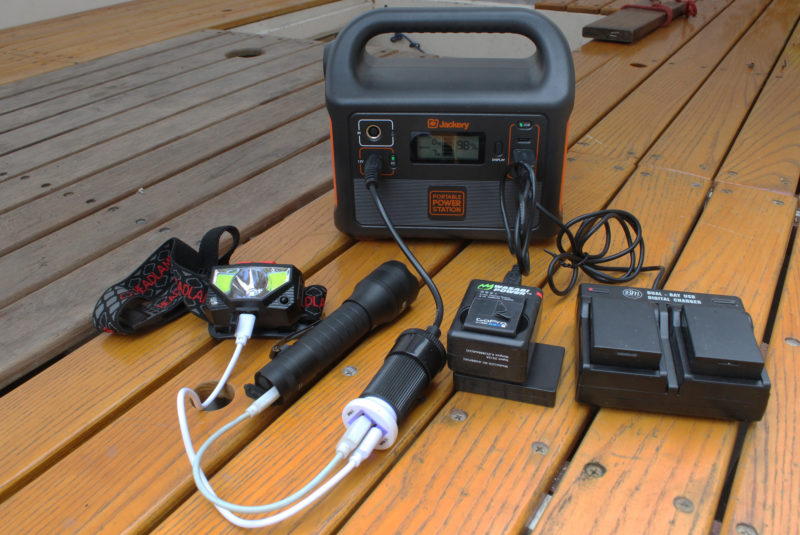
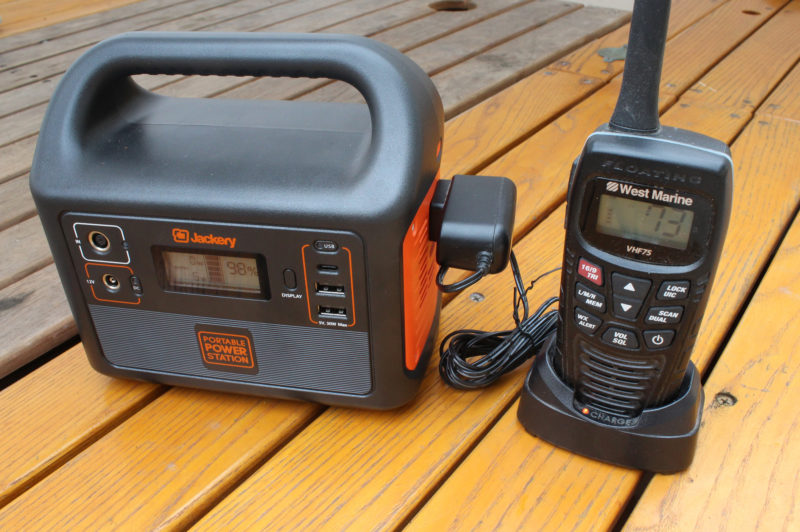
Join The Conversation
We welcome your comments about this article. To include a photo with your remarks, click Choose File below the Comment box.


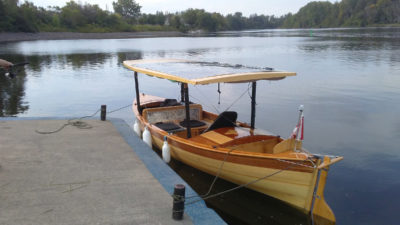








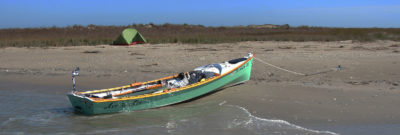
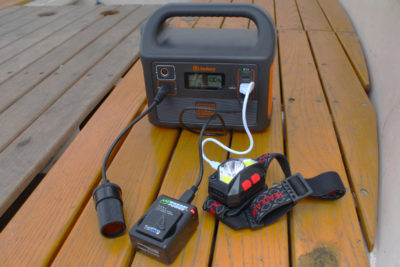











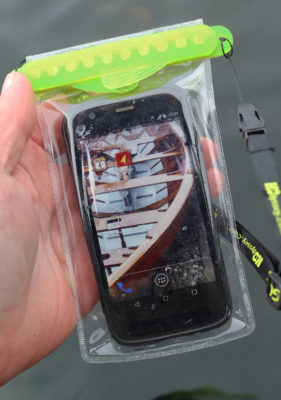


I’m using a similar unit, the Rockpals 300w Portable Power Station in my CLC Autumn Leaves, reviewed in the December issue. I found that it was all I needed for four days on board, running cabin lights and recharging phone, tablet and hearing aids. Next step is to install a 20W solar panel, which this unit is already set up to take a charge from.
Yes, this approach is far simpler, smaller and lighter than the electric setups I’ve had in the past, which have involved heavy AGM batteries, solar panel controllers, and a lot more wiring to link the battery to the necessary power points. The only negative I’ve found is that if the unit sits turned off for a couple of months, it loses its charge. This will not be a problem once it’s linked to the solar panel, but I did think that these types of batteries held a charge better.
I have a 27′ simple sailboat with a 12-volt system that runs running lights and two LED cabin lights. It has a switch panel connected to a small golf-cart type battery by wire leads. How would I connect it to one of these power sources. They look great.
The Jackery comes with a 12-v socket, automotive cigarette style. In the first photo above it is being used with the white USB adapter. Buy a plug to fit the socket (auto parts or electronics stores) and connect its wires to your existing wire leads. To be on the safe side, I’d make it an either/or system with switches or the wiring that allows only one power source at a time. I don’t know what would happen to the Jackery if its 12-v out plug were subject to current from your existing system.
Thanks, Christopher. My idea is to remove the existing battery permanently, and use only the Jackery.
Where can I buy that cable that you have connected to the 12v output port pictured several times in your article? I just bought the 160 and thought I had the correct cable, but I don’t.
Thanks!
I’m pretty sure the cable with the 12v car socket came with the Jackery 160, although the manual labelled its drawing of the device as a “DC inverter Cable.” The listing of “what’s in the box” on the Jackery web site no longer includes this device. This comes close: BiXPower Car Cigarette Socket to 5.5 x 2.5mm or 5.5 x 2.1mm Male Barrel Connector Adapter But the diameter listed, 5.5 mm, is smaller than the 5.9 mm diameter of what I showed in the review.
I wanted to provide an update. I contacted Jackery support and once they verified my Amazon purchase – they sent me the correct cable/adapter for no charge. Not sure why they decided to no longer include the cable/adapter, but for now they seem happy to ship if requested.